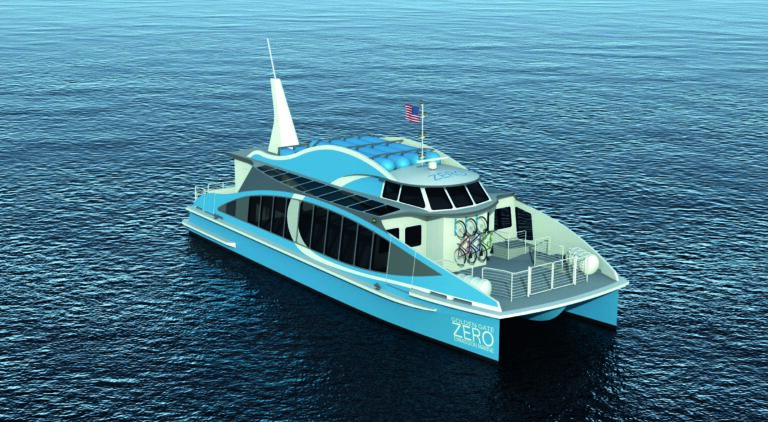Hydrogen fuel cell technology is commonly seen as being the best source of clean, zero-emission propulsion power. It is true that fuel cells have zero emissions, but a report from the Sandia National Laboratories in New Mexico and California has found that when the synthesis of hydrogen, transportation and storage is taken into consideration, it is not as clean as originally thought.
Sandia Lab’s San Francisco Bay Area Energy Electric Vessel with Zero Emissions initiative looked at a purely conceptional design in the form of a 150-passenger hydrogen fuel cell powered ferry SF Breeze. It found that when the fuel cells use hydrogen sourced from natural gas (methane), some emissions are the same or worse than diesel-engine powered boats. But when renewably sourced hydrogen is used, the fuel cells have huge emissions benefits.
Dr Lennie Klebanoff, a principal member of the technical team at Sandia Labs, tells E&H Marine that two separate types of emissions were assessed for the report: greenhouse gases (GHGs) such as carbon dioxide (CO2), and criteria pollutants such as unburned hydrocarbons, nitrous oxide (N2O) and particulate matter. These were measured on a well-to-waves (WTW) basis, which is the sum of all the emissions, taking into account not just those from the boat but also those created by the production, delivery and storage of the hydrogen.
Because fuel cells have no emissions other than water vapor, the boat was clean. Therefore the focus was on how the hydrogen was made and delivered to SF Breeze, and the level of GHGs and criteria pollutant emissions created during these processes. This was compared with the WTW emissions from a similar diesel-engine powered ferry.
“For ferry vessels, the criteria pollutant emissions are far below what the equivalent diesel vessel would put out, no matter how the hydrogen is made,” Klebanoff says. “As far as GHG goes, we found that if you make hydrogen from steam reforming of natural gas, it turns out that the GHG emissions are worse.”
Klebanoff points out that when creating hydrogen from natural gas, the carbon comes out as CO2. It also takes energy to make the hydrogen, which adds to the emissions.
Transporting hydrogen
Dr Joe Pratt, CEO and chief technology officer of Golden Gate Zero Emission Marine (GGZEM) and on entrepreneurial leave from Sandia, says that most of the emissions come from the conversion of natural gas to hydrogen. “Emissions associated with transporting the hydrogen can vary, depending on how far and how much you are transporting, and whether you are using a diesel-powered truck or something cleaner. But transportation emissions were small compared with the emissions caused by actually converting
the natural gas to hydrogen.”
Klebanoff stresses that there are extra emissions when using liquid hydrogen, which also requires energy. SF Breeze uses liquefied hydrogen. “It takes 30% of the energy in
a given amount of hydrogen to liquefy it. So there are emissions associated with that,” says Klebanoff.
Further emissions penalties were levied on the SF Breeze because its design and the way the hydrogen was stored on board meant that it could take fewer passengers than in the equivalent diesel boat. “We reported the emissions per passenger carried, so there was a penalty there,” Klebanoff says. Therefore, despite the reduction in criteria pollutants, the SF Breeze showed worse results for emissions in GHGs than a diesel boat, but only if its hydrogen came from natural gas.
Klebanoff describes the two main ways to source hydrogen: “One is from fossil resources such as natural gas, and the other is through the electrolysis of water, which sounds good – but you have to ask where the electricity comes from, and usually it is from fossil fuel.”
However there are also renewable ways to produce electricity for electrolysis, such as using wind- or solar-powered electrolyzed water, and this is where the advantages come in. “If you use renewable sources of hydrogen, the reductions are dramatic. There is a 76% fall in GHG emissions,” Klebanoff says.
Renewable sources
The second assessed ship design was a research vessel concept, the Zero V. Researched by the Scripps Institute of Oceanography, it creates its own power through renewable sources for the electrolysis process. In this boat, the reduction in GHGs was even bigger, at 91.5%, as there are no pathway and delivery emissions.
The extent of the overall reduction in emissions is important, because unless a substantial saving can be made, it won’t have any long-term impact.
“You have to get really deep reductions for the savings to be robust against growth in the fleet. That is why 76% is pretty good and 90% is even better. You’d like it to be 100%,” says Klebanoff. “If your new boat is 50% better than the old dirty boat, but you have two clean boats… That is why you need deep cuts. Everybody in the hydrogen field knows that. The real benefit is in renewable hydrogen.”
He adds that using fossil-fuel sourced hydrogen enables the technology to advance initially, but the real benefits will come when more renewably sourced hydrogen is available. Pratt points to ways of making more sustainable hydrogen, including via renewable methane from water treatment plants, or landfills that could produce carbon-neutral hydrogen. There is no technological reason hydrogen can’t be made renewably, he stresses. It comes down to economics and timing.
“As more renewable energy gets installed for regular power generation on the grid, you can use that same energy to make hydrogen,” he explains. “As more hydrogen is made that way, you will get closer and closer to the price of hydrogen made from natural gas, until renewable hydrogen will be even cheaper.”
The price of hydrogen can vary greatly depending on how, where and in what volume it is sourced. There are also different prices for renewable and non-renewable hydrogen. A 2015 study showed that in the San Francisco Bay area, renewable hydrogen cost at least one-and-a-half to two times more than hydrogen made from natural gas.
Local heroes
“If you are in Germany, where you have a lot of excess wind power, turning that into hydrogen might be a lot cheaper than making it from natural gas imported from other countries,” Pratt says. “Another example is Norway, which has a lot of hydroelectric, so potentially renewable hydrogen can be made less expensively. It depends where you go and the price can change around the world.”
Low-emissions company ULEMCo offers dual-fuel solutions that inject hydrogen into combustion engines. It is part of the HyDIME (Hydrogen Diesel Injection in a Marine Environment) project to convert an auxiliary power unit (APU) on a ferry in the Orkney Islands, off the coast of Scotland. Orkney has a lot of onshore wind energy schemes but is unable to export excess power because of the restrictions on the cable. The local marine energy research center has invested in the electrolysis of hydrogen, which is 100% green as the electricity is from renewable energy.
Amanda Lyne, managing director of ULEMCo, says, “The goal is to find as many uses for it as possible and one of those is certainly the ferries in the longer term. In the short term, we are demonstrating and getting through the marine safety requirements to make sure we can convert the APU to hydrogen dual fuel. It will still use diesel, but we will replace large quantities with hydrogen. That is beneficial for the operator as it saves money on the diesel, which is expensive because it has to be brought to these remote islands.”
As part of the Hylantic project, ULEMCo is developing a demonstration marine engine to run on hydrogen. The intention is to characterize and optimize the engine to get the NOX as low as possible and to understand and research the marine drive cycle to make it viable. Dual fuel is an alternative to fuel cell technology because it uses hydrogen in existing combustion engines. There is therefore no need to electrify the ship.
“Also when we are in a world with renewables, localized energy availability is what pays,” says Lyne. “In one country solar will be favorable; in another it will be offshore wind. Therefore you don’t have a ubiquitous energy solution, as the best solution depends what is available in your area. We have to have a shipping industry that can cope with that globally, and hydrogen is a universal enabler across these technologies.”



